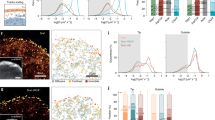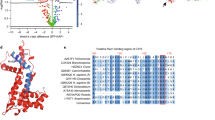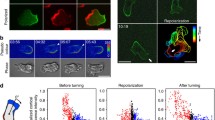Abstract
Arp2/3 complex nucleates dendritic actin networks and plays a pivotal role in the formation of lamellipodia at the leading edge of motile cells. Mouse fibroblasts lacking functional Arp2/3 complex have the characteristic smooth, veil-like lamellipodial leading edge of wild-type cells replaced by a massive, bifurcating filopodia-like protrusions (FLPs) with fractal geometry. The nanometer-scale actin-network organization of these FLPs can be linked to the fractal geometry of the cell boundary by a self-organized criticality through the bifurcation behavior of cross-linked actin bundles. Despite the pivotal role of the Arp2/3 complex in cell migration, the cells lacking functional Arp2/3 complex migrate at rates similar to wild-type cells. However, these cells display defects in the persistence of a directional movement. We suggest that Arp2/3 complex suppresses the formation of FLPs by locally fine-tuning actin networks and favoring dendritic geometry over bifurcating bundles, giving cells a distinct evolutionary edge by providing the means for a directed movement.






Similar content being viewed by others
References
Anderson KL, Page C, Swift MF, Suraneni P, Janssen MEW, Pollard TD, Li R, Volkmann N, Hanein D (2016) Nano-scale actin-network characterization of fibroblast cells lacking functional Arp2/3 complex. J Struct Biol 197:312–321
Bak P, Tang C, Wiesenfeld K (1988) Self-organized criticality. Phys Rev A 38:364
Beli P, Mascheroni D, Xu D, Innocenti M (2008) WAVE and Arp2/3 jointly inhibit filopodium formation by entering into a complex with mDia2. Nat Cell Biol 10:849–857
Bonabeau E (2002) Agent-based modeling: methods and techniques for simulating human systems. Proc Natl Acad Sci U S A 99(Suppl 3):7280–7287
Cardamone L, Laio A, Torre V, Shahapure R, DeSimone A (2011) Cytoskeletal actin networks in motile cells are critically self-organized systems synchronized by mechanical interactions. Proc Natl Acad Sci U S A 108:13978–13983
Goley ED, Welch MD (2006) The ARP2/3 complex: an actin nucleator comes of age. Nat Rev Mol Cell Biol 7:713–726
Huber F, Käs J (2011) Self-regulative organization of the cytoskeleton. Cytoskeleton (Hoboken) 68:259–265
Kollmar M, Lbik D, Enge S (2012) Evolution of the eukaryotic ARP2/3 activators of the WASP family: WASP, WAVE, WASH, and WHAMM, and the proposed new family members WAWH and WAML. BMC Res Notes 5:88
Korobova F, Svitkina T (2008) Arp2/3 complex is important for filopodia formation, growth cone motility, and neuritogenesis in neuronal cells. Mol Biol Cell 19:1561–1574
Krause M, Gautreau A (2014) Steering cell migration: lamellipodium dynamics and the regulation of directional persistence. Nat Rev Mol Cell Biol 15:577–590
Le Goff L, Hallatschek O, Frey E, Amblard F (2002) Tracer studies on F-actin fluctuations. Phys Rev Lett 89:258101
Nolen BJ, Tomasevic N, Russell A, Pierce DW, Jia Z, McCormick CD, Hartman J, Sakowicz R, Pollard TD (2009) Characterization of two classes of small molecule inhibitors of Arp2/3 complex. Nature 460:1031–1034
Pollard TD (2007) Regulation of actin filament assembly by Arp2/3 complex and formins. Annu Rev Biophys Biomol Struct 36:451–477
Rotty JD, Wu C, Bear JE (2013) New insights into the regulation and cellular functions of the ARP2/3 complex. Nat Rev Mol Cell Biol 14:7–12
Sarmiento C, Wang W, Dovas A, Yamaguchi H, Sidani M, El-Sibai M, Desmarais V, Holman HA, Kitchen S, Backer JM, Alberts A, Condeelis J (2008) WASP family members and formin proteins coordinate regulation of cell protrusions in carcinoma cells. J Cell Biol 180:1245–1260
Smith TG, Lange GD, Marks WB (1996) Fractal methods and results in cellular morphology--dimensions, lacunarity and multifractals. J Neurosci Methods 69:123–136
Suraneni P, Fogelson B, Rubinstein B, Noguera P, Volkmann N, Hanein D, Mogilner A, Li R (2015) A mechanism of leading edge protrusion in the absence of Arp2/3 complex. Mol Biol Cell 26:901–912
Suraneni P, Rubinstein B, Unruh JR, Durnin M, Hanein D, Li R (2012) The Arp2/3 complex is required for lamellipodia extension and directional fibroblast cell migration. J Cell Biol 197:239–251
Wu C, Asokan SB, Berginski ME, Haynes EM, Sharpless NE, Griffith JD, Gomez SM, Bear JE (2012) Arp2/3 is critical for lamellipodia and response to extracellular matrix cues but is dispensable for chemotaxis. Cell 148:973–987
Funding
National Institutes of Health (NIH) Grants P01-GM066311 (Pollard), P01-GM098412 (DH), R01-GM115972 (DH), and P01-GM121203 (NV) supported this work. NIH grant S10-OD012372 (DH) and P01-GM098412-S1 (DH) funded the purchase of the Titan Krios TEM (ThermoFisher Scientific; FEI Company) and Falcon II direct detector (ThermoFisher Scientific; FEI Company).
Author information
Authors and Affiliations
Corresponding author
Ethics declarations
Conflict of interest
Karen L. Anderson declares that she has no conflict of interest. Mark F. Swift declares that he has no conflict of interest. Dorit Hanein declares that she has no conflict of interest. Niels Volkmann declares that he has no conflict of interest.
Ethical approval
This article does not contain any studies with human participants or animals performed by any of the authors.
Rights and permissions
About this article
Cite this article
Anderson, K.L., Swift, M.F., Hanein, D. et al. Does self-organized criticality drive leading edge protrusion?. Biophys Rev 10, 1571–1575 (2018). https://doi.org/10.1007/s12551-018-0484-6
Received:
Accepted:
Published:
Issue Date:
DOI: https://doi.org/10.1007/s12551-018-0484-6




